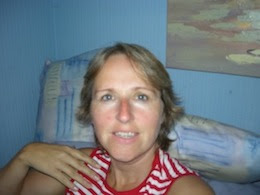LOCATION AS A CHARACTER IN A NOVEL by J.L.Greger
Location as a Character
in a Novel
Murderers and
thieves aren’t born bad. Their environment shapes their basic inherent
characteristics (genetically derived) into criminals. We are all products of
both nature and nurture. Accordingly, locations
are characters in all of our lives.
I wanted to
show how sloppy practices can morph into criminal activities (embezzlement,
abuse of animals, perjury), and these “small” crimes can escalate into murder
in the right permissive environment. In She Didn’t Know Her Place, State U
provides the right environment for nurturing wrong-doing. This red-brick state
university was a sleepy place in the 1950s. Then the ambitions of a few to make
it more competitive led to shortcuts. The result is this college looks in good
shape on the surface, but the foundations of most building are badly cracked.
The buildings are often drafty because of poor maintenance. In other words, the
state college is a character in this mystery. It’s deceiving pretty front hides
major flaws.
Now think
about your novels. Have you developed
your locations to be characters?
Although we
all enjoy reading novels set in exciting locations—a space station of the
future, the Freedom Trail in Boston, or Qatar. Any location can become
intriguing.
A location, like any other character,
needs to be multi-dimensional to be interesting. Decrepit, deserted houses and dark,
damp basements bode evil in mysteries and ghost stories but are often trite. Contrasts
generally make a location more interesting. For example, Jaws would have been less exciting if the location was a rocky
beach instead of a crowded, sunny tourist attraction. Marilyn Meredith (our
host) has shown political graft and many other nasty secrets in the sleepy, but
friendly, community of Rocky Bluff.
Have fun making the location of your
next novel nurture the basic characteristic (good and bad) of your other
characters.
Blurb: Would you rather be fired or face
criminal charges? In She Didn’t Know Her Place, Dana
Richardson faces that dilemma in her new job at a state university in New
England. A research center, which reports to her, is falsifying data to help
industrial clients meet federal pollution standards, and the last woman who
tried to investigate the problem died under suspicious circumstances.
Author: J. L. Greger is a biology professor
at the University of Wisconsin-Madison turned novelist. She likes to include
tidbits of science in her thrillers and mysteries.
Her newest mystery
is She
Didn’t Know Her Place. Her other books include: Riddled with Clues (Finalist for a 2017 NM/Arizona book
awards) and Murder: A New Way to Lose (winner of 2016 Public Safety Writers
Association [PSWA] contest and finalist for a 2016 NM/ Arizona book award).
She focuses
on families in her short stories. She has published two collections of stories:
The
Good Old Days? and Other People’s Mothers (finalist for a 2017 NM/Arizona Book
Awards).




Comments
Janet
Good post, Janet!